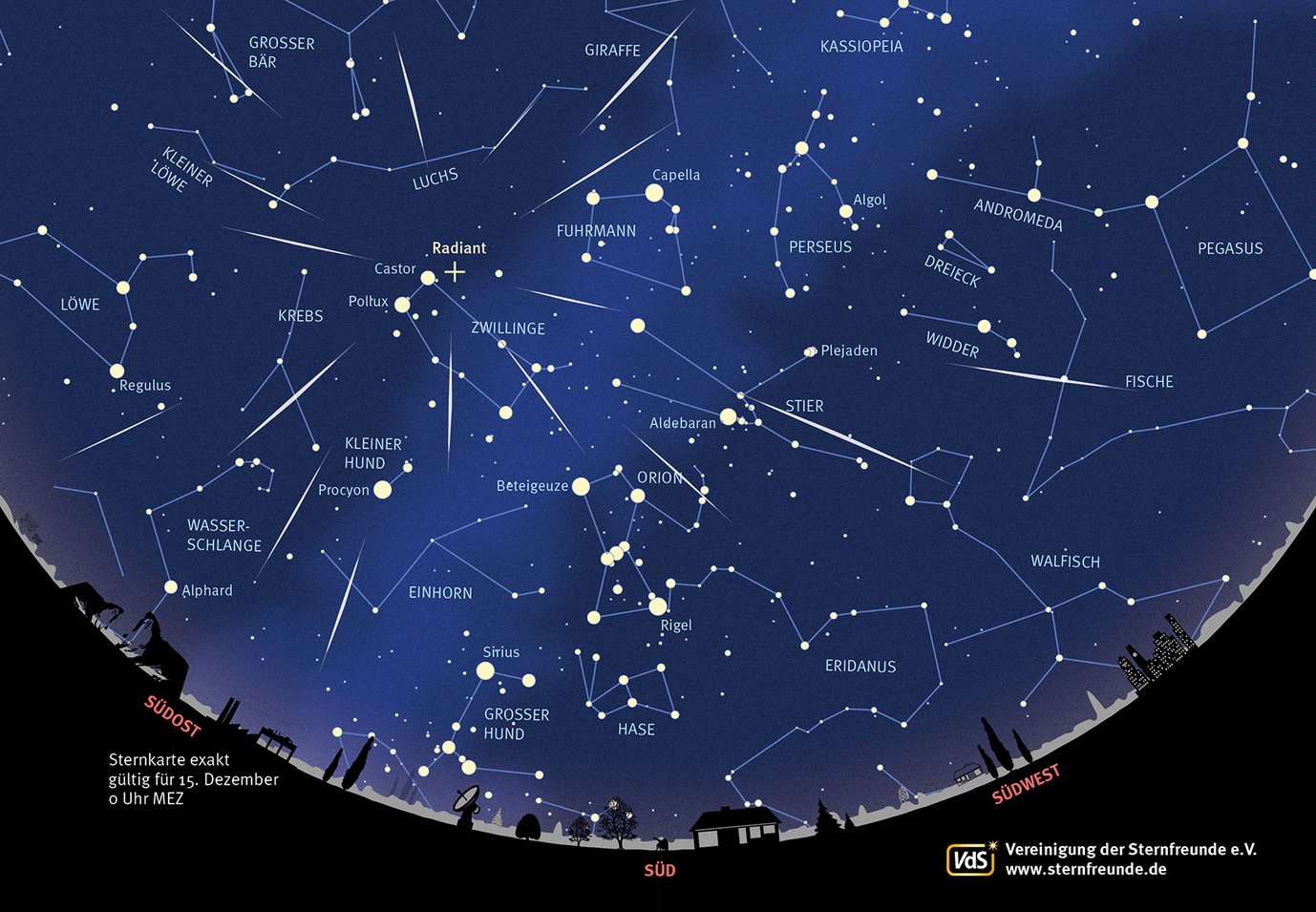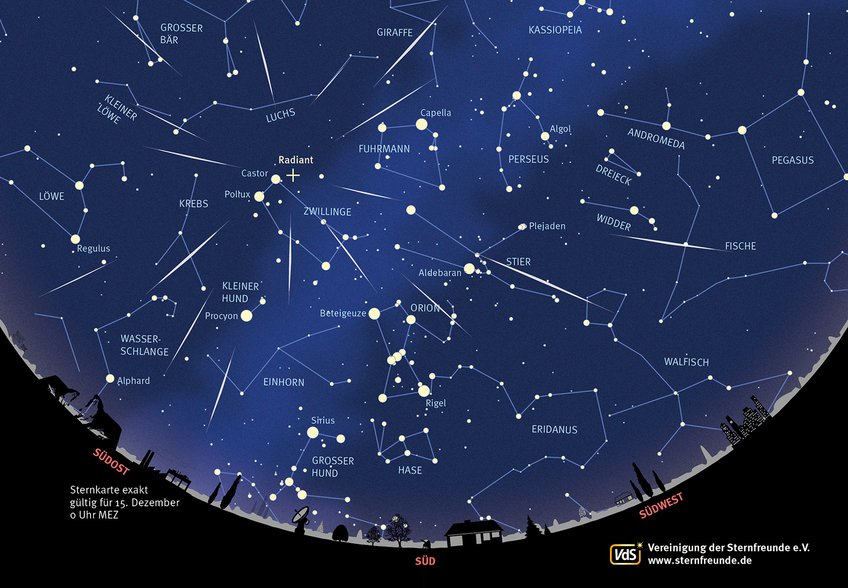Shooting stars from the twins – the Geminids will arrive soon
They were named after the constellation Gemini: The Geminids usually provide a beautiful meteor show in mid-December. With up to 150 meteors per hour, the Geminids are considered the richest stream of the year. The peak of the activity is reached on 14 December at 14 CET., so the nights of 13-14 December and 14-15 December are best for shooting star hunting.
The maximum of the Geminids will take place during the day for central Europe this year: on Wednesday, 14 December around 14 CET the peak will be reached. For observers, the nights from Tuesday to Wednesday and from Wednesday to Thursday are most promising. Especially during the night after the maximum, from 14 to 15 December, numerous meteors can be expected. In practice, depending on the brightening of the night sky, 30 to 60 meteors will be seen, i.e. a shooting star every one to two minutes. Among them are also particularly bright objects.
The constellation of Gemini rises already in the evening hours in the eastern sky, so that already after nightfall the shooting star show begins. For those who don't know the constellation: It can be found just to left and above Orion. Its two main stars Kastor and Pollux, a pair of twins known from Greek mythology, are prominently bright. The point in the sky where the shooting stars apparently come from (technical term: the radiant) is just above Kastor, the upper of the two twin stars. But this is only a perspective effect like driving a car through a snow shower.

The higher level of meteors occur due to Earth’s passing through a cosmic dust cloud, presumably left by the minor planet Phaethon - possibly this asteroid broke up and left debris on its orbit, which burns up as shooting stars when entering Earth's atmosphere.
So unlike the well-known Perseid meteors in summer, you don't have to wait until after midnight to see most of the Geminids. And since the waning crescent Moon rises around 21 CET on 13 December or after 22 CET on 14 December, the evening hours are prime observing time this year. As soon as it gets dark, you can curiously look out for them. A free view to the east is advantageous in the evening, while during the night Gemini is high up in the southern sky, and in the morning it closes in on setting in the northwest.
